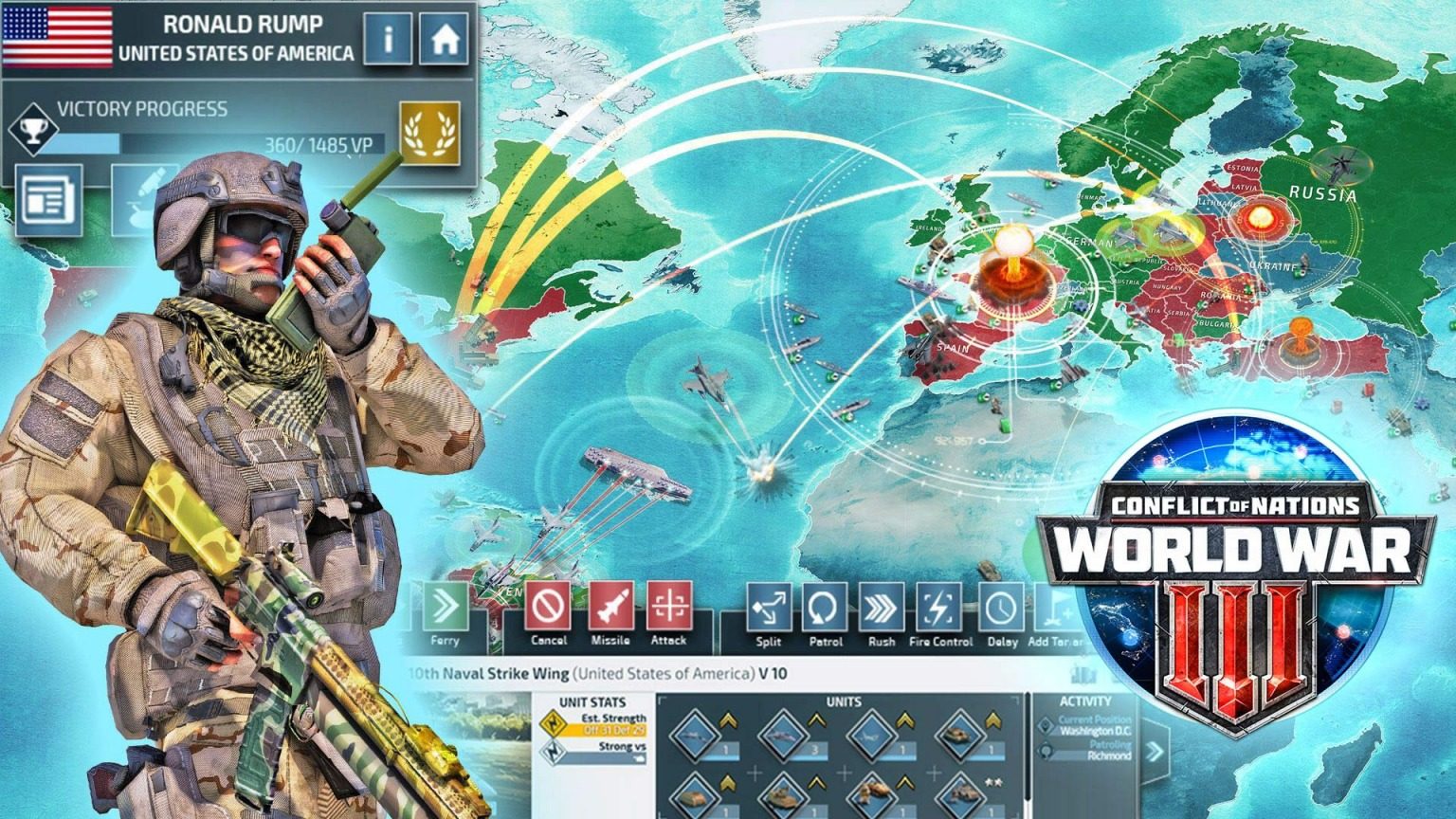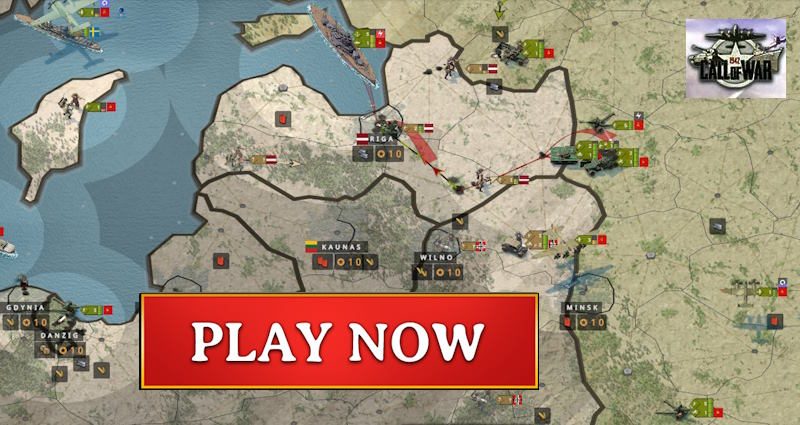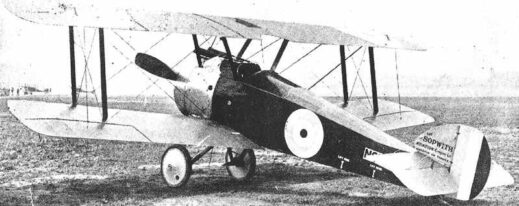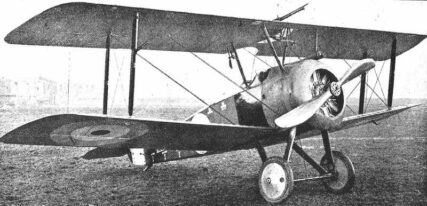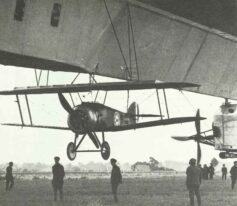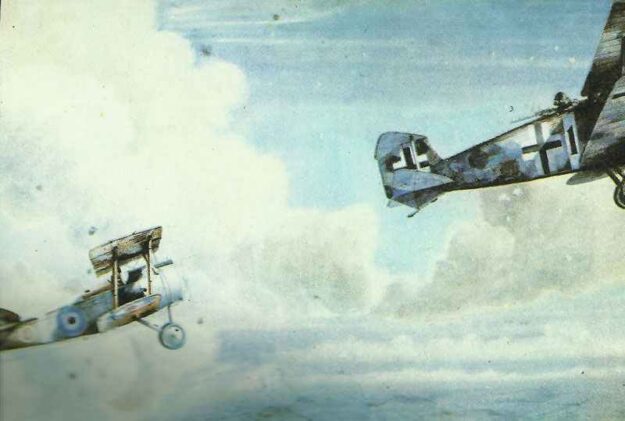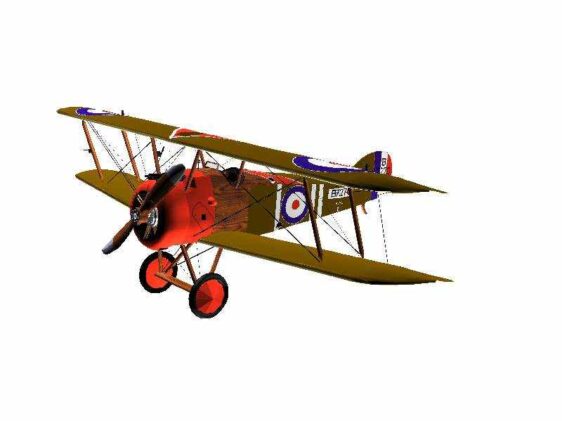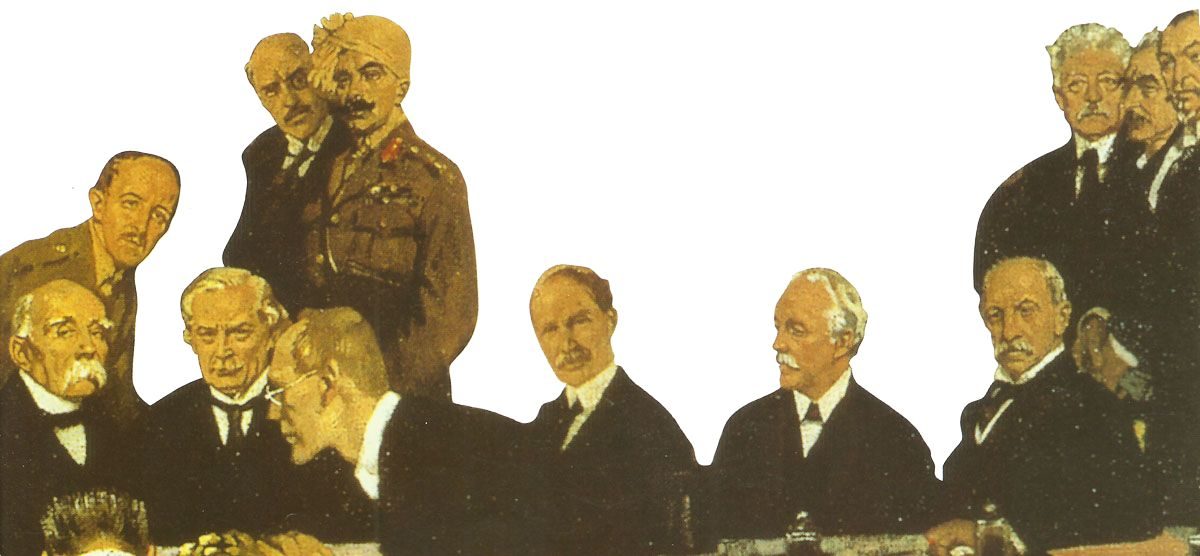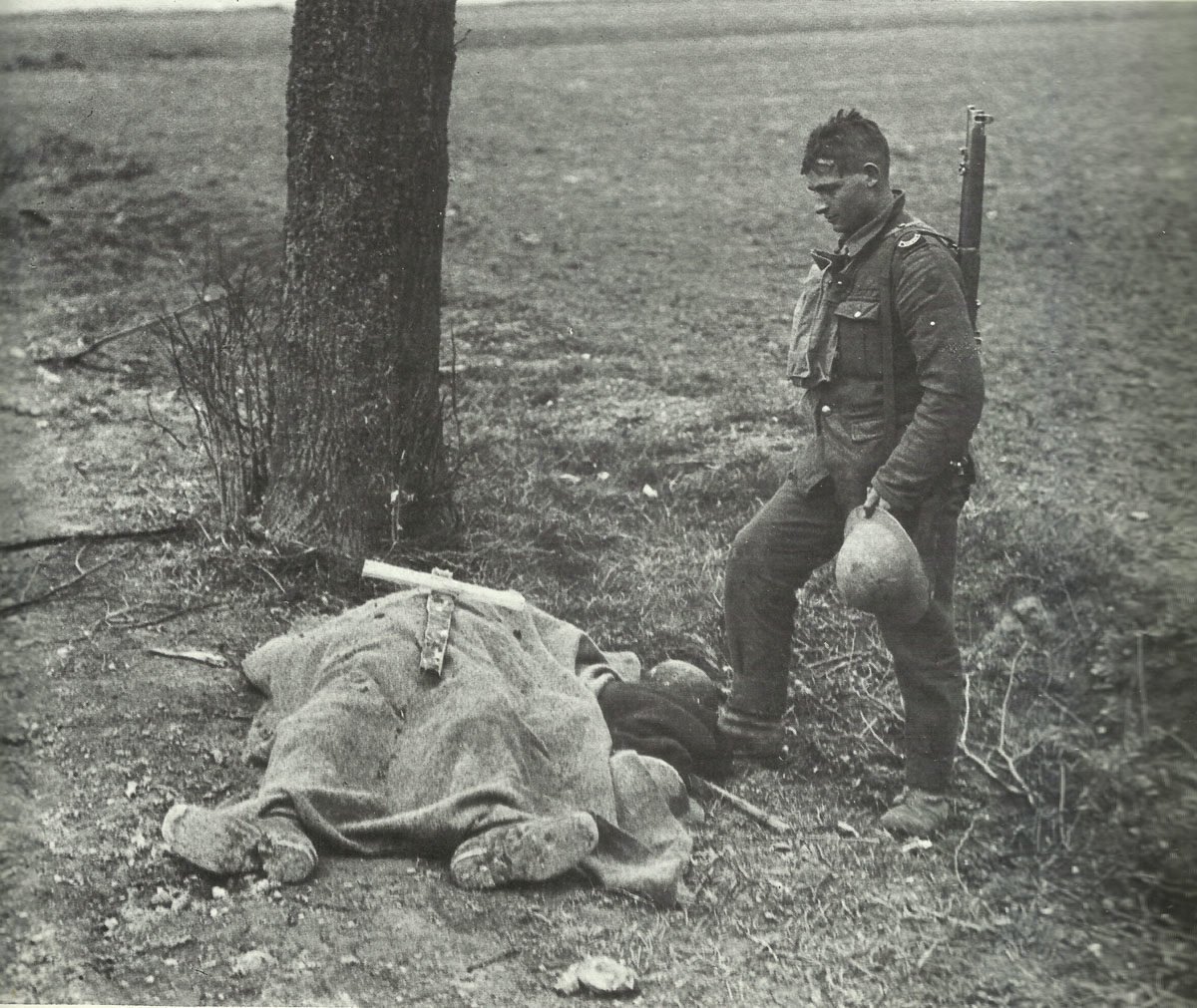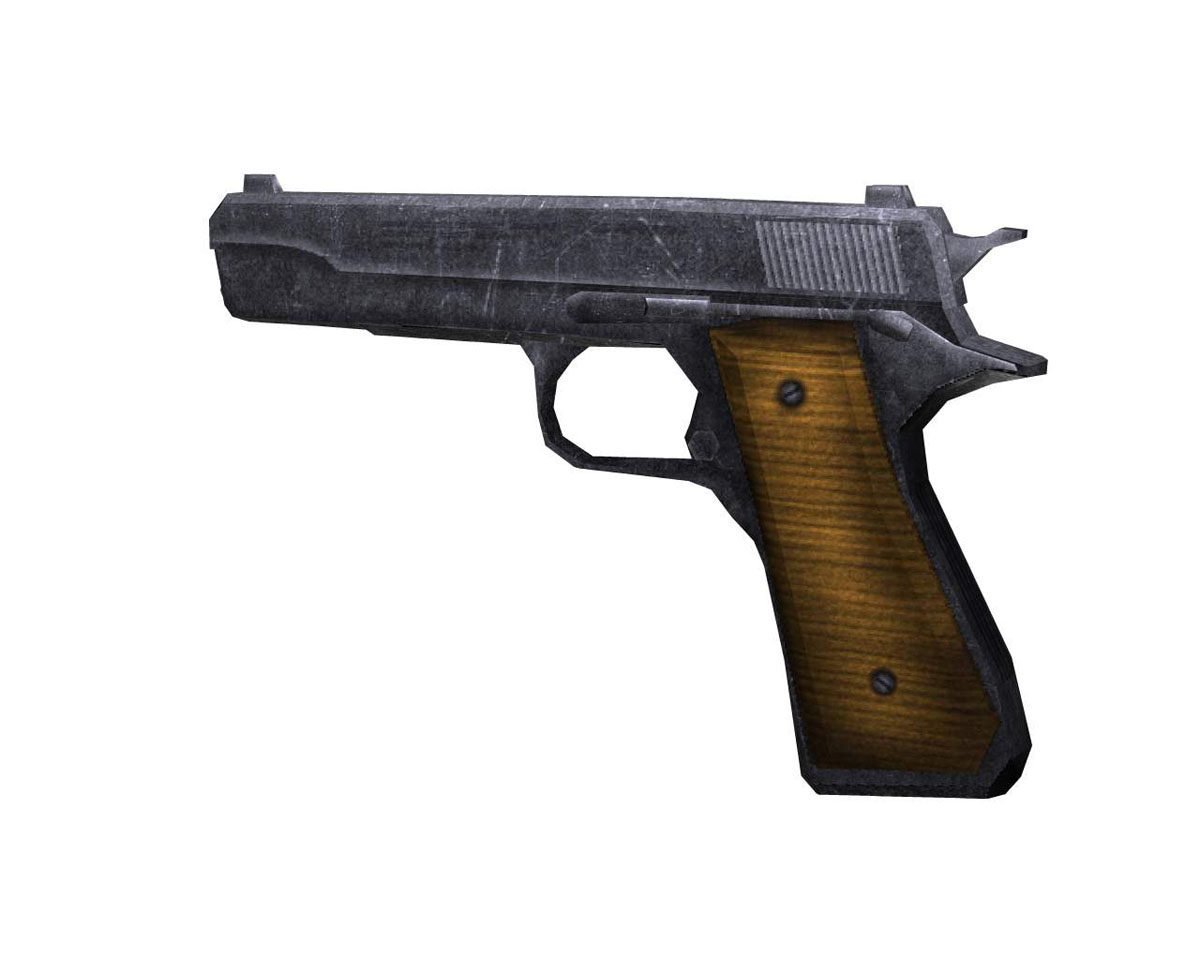Sopwith Camel – famous British fighter plane of World War One.
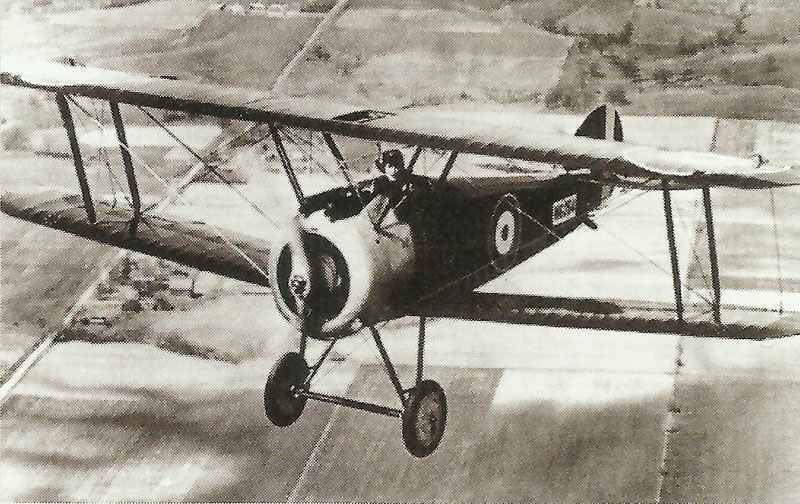
History, development, service, specifications, pictures and 3d model.
British Sopwith Camel fighter plane of World War I
Table of Contents
The Sopwith Camel was one of the most famous and successful fighter aircraft of World War I, built by the Sopwith Aviation Company of Britain. Introduced in 1917, it quickly became a legend of early aerial combat.
Overview
– Manufacturer: Sopwith Aviation Company
– First flight: December 22, 1916
– Introduced: June 1917
– Crew: 1 (pilot)
– Engine: Clerget 9B rotary engine (130 hp) — though several variants used different engines
– Armament: Two synchronized .303 Vickers machine guns, firing through the propeller arc
– Top speed: Around 115 mph (185 km/h)
– Service ceiling: About 21,000 ft (6,400 m)
Design and Performance
The Sopwith Camel was named for the hump-shaped fairing over its twin machine guns, giving the aircraft its distinctive “camel” profile. It was a compact, highly maneuverable biplane, but also notoriously difficult to fly — especially for inexperienced pilots.
Its rotary engine produced strong gyroscopic effects, making right-hand turns much faster than left ones. Skilled pilots, however, could use this quirk to their advantage in dogfights, giving the Camel an edge in agility.
Combat Record
The Camel earned a fearsome reputation on the Western Front. It was credited with shooting down more enemy aircraft than any other Allied fighter of the war — over 1,200 confirmed kills.
It served with the Royal Flying Corps (RFC) and later the Royal Air Force (RAF) in roles ranging from air superiority to ground attack. Camels also flew from early aircraft carriers and were used in home defense against German air raids.
Legacy
While challenging to handle, the Sopwith Camel represented a major step forward in fighter design — combining firepower, speed, and maneuverability in a compact frame. It became an icon of early aviation and remains one of the most recognizable aircraft of the First World War.
Today, several replicas and original examples are preserved in museums, including the Royal Air Force Museum in London and the Smithsonian National Air and Space Museum in Washington, D.C.
History
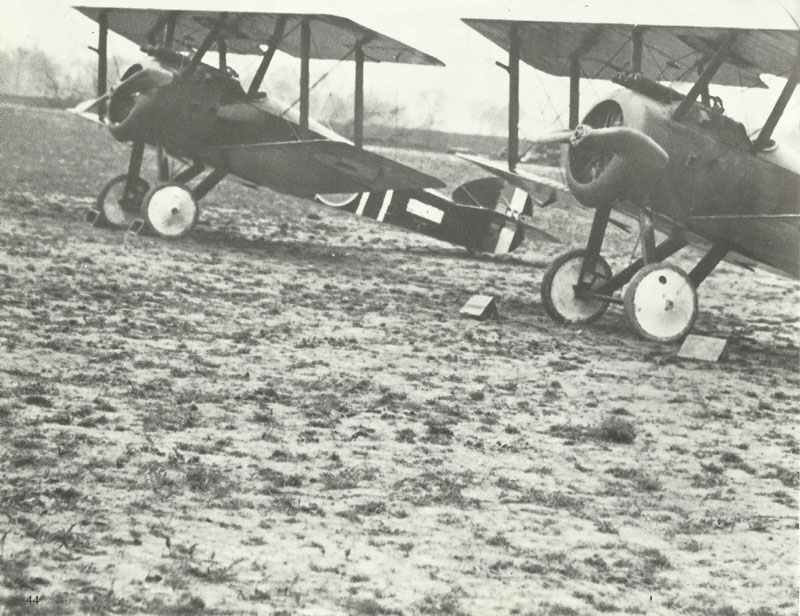
The Sopwith F I Camel, the First World War’s most successful fighter, with 1,294 aircraft downed to its credit. It is generally an enlarged and modified Sopwith Pup. It was designed specially for high performance and extreme maneuverability.
It owed much of its success to its phenomenal aerobatic capabilities, which were the result of its compact design, powerful controls and the fact that all the large weights were concentrated on or near the center of gravity – in the first seven feet of the fuselage. The considerable torque of the rotary engine on the small frame was a vital factor in the Camel’s lightning fast turn to the right, but it also meant that it was impossible to fly the Camel ‘hands off’.
Because of this difficulty, the type got an undeserved reputation as a killer, but all that was needed was great care, especially at take off and landing. But many less experienced pilots paid the price with their life. As a single seat fighter however it was a great success. The Camel was the first British fighter to have twin Vickers guns.
Pictures of Sopwith Camel:
Specifications Sopwith Camel:
Specification:
Sopwith Camel F1 | Specification |
|---|---|
Type | Single-seater Scout Fighter |
Engine | most Clerget 9B 130hp |
Span | 28 ft. |
Overall length | 18 ft. 8 in. |
Maxmimum height | 9 ft |
Weight empty | 889 lb |
Weight loaded | 1,422 lb |
Weight maximim loaded | 1.524 lb |
Speed | 113 mph at 10,000ft, 122 mph at sea level |
Climb | 5 min to 5,000ft, 10 min to 10,000ft 16 min 50 sec to 15,000ft, approx. 1000 ft/sec |
Service ceiling | 24,000 ft |
Range | approx. 240 miles (endurance 2 1/2 hours) |
Tank capacity | petrol 26 galls, oil 5 1/2 galls |
Armament | |
Bomb load | optional 4 x 25lb bombs under wings |
First fligt | December 1916 |
Service delivery | June 1917 |
Production figure | 5,490 |
Enemies claimed destroyed | 1,294 |
3d model Sopwith Camel:
References and literature
Jane’s Fighting Aircraft of World War I
Aircraft of World War I 1914-1918 (Jack Herris, Bob Pearson)
Technik und Einsatz der Kampfflugzeuge vom 1. Weltkrieg bis heute (Ian Parsons)
Fighters of Warld War One (Andrew Kershaw)
Das große Buch der Luftkämpfe (Ian Parsons)
Fighters, Attack and Training Aircraft 1914-1919 (Kenneth Munson)
Kampfflugzeuge (Bill Gunston)
The Illustrated Encyclopedia of Weapons of World War I (Chris Bishop)
An Illustrated History of the Weapons of World War One (Ian Westwell)


